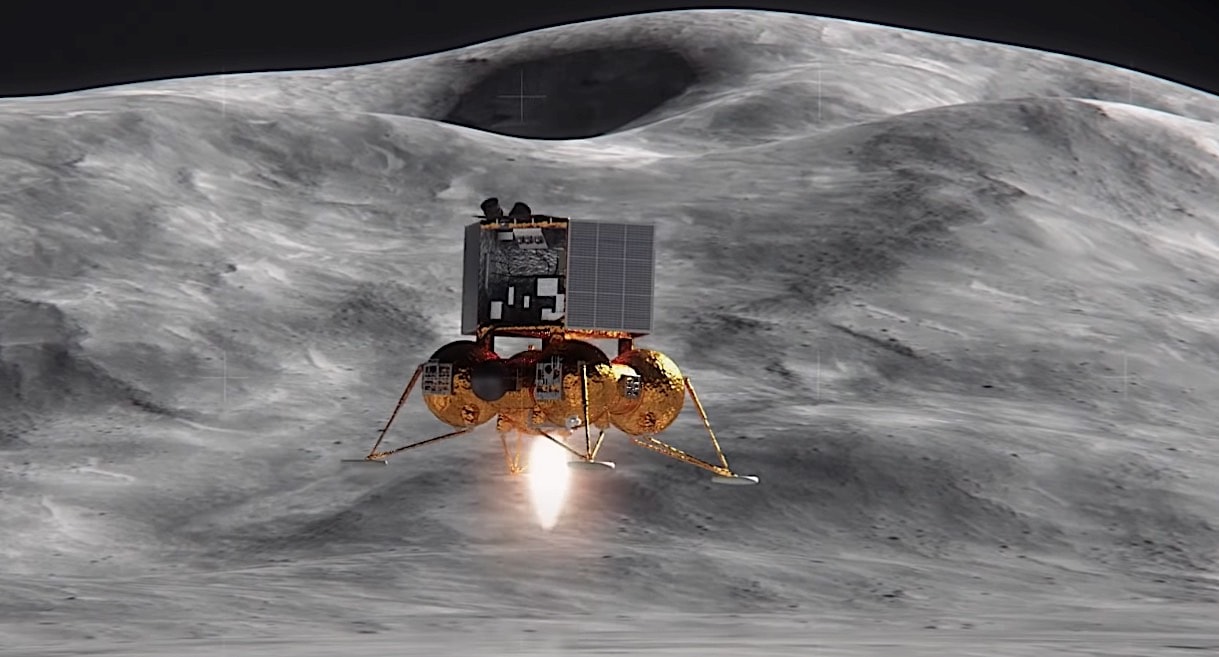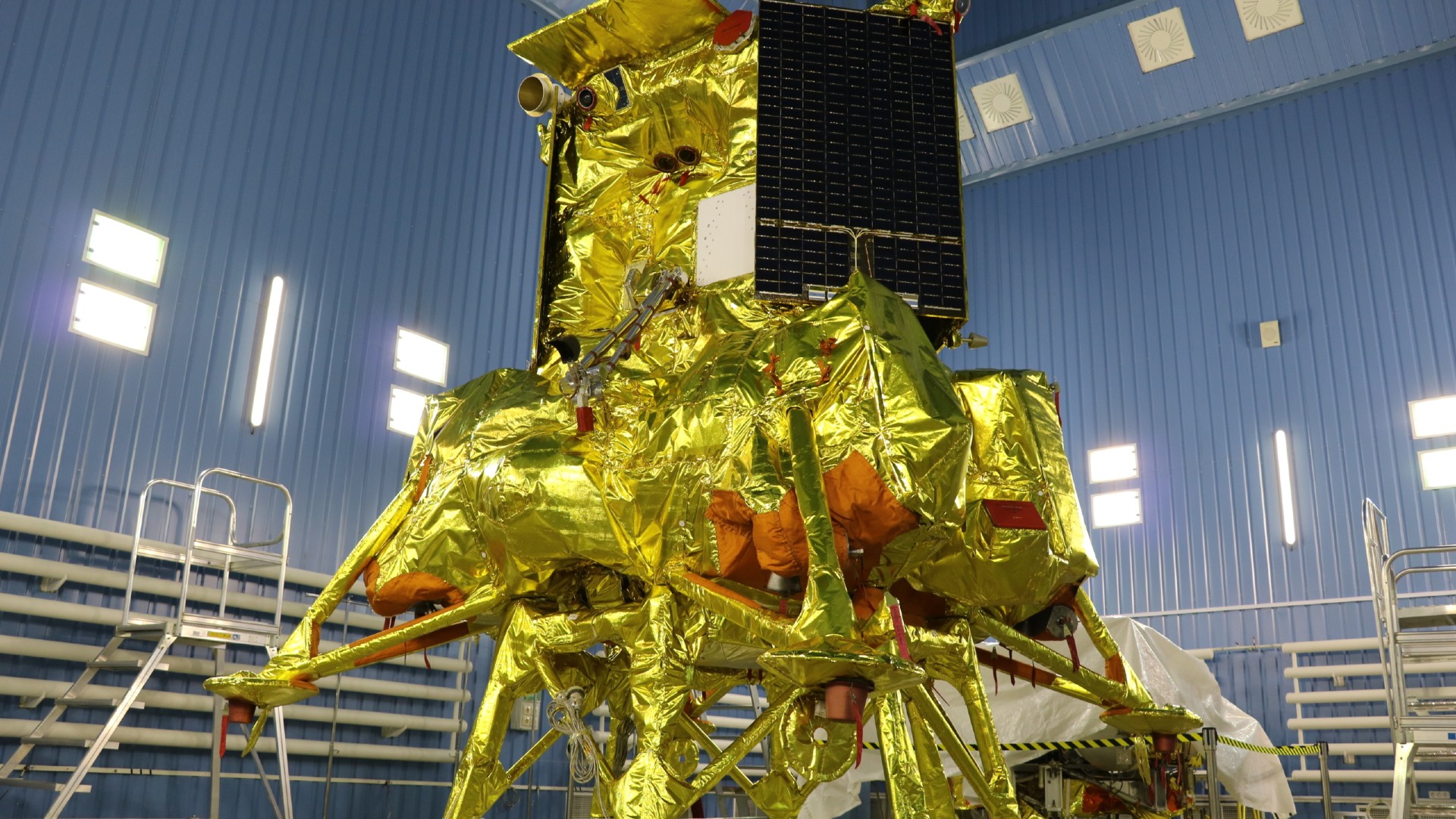Russia to evacuate village for first lunar lander mission in half century

Russia to evacuate village for first lunar lander mission in half century
Luna-25, a lunar lander mission by the Russian space agency Roscosmos, is scheduled to launch on a Soyuz-2 Fregat booster. It will be the first lander to reach the lunar South Pole. This mission marks a significant step in lunar exploration as it focuses on exploring and studying the uncharted and scientifically intriguing region of the Moon’s South Pole.
Luna-25’s primary objective is to conduct scientific investigations and gather valuable data about the lunar surface and the surrounding environment. The lunar South Pole is of particular interest to scientists because it is believed to contain permanently shadowed areas that might have water ice and other resources. Understanding these resources is crucial for future lunar exploration and potential human missions to the Moon.
The successful execution of the Luna-25 mission will not only advance our knowledge of the Moon but also pave the way for future lunar missions by Russia and other spacefaring nations. It represents a significant achievement in space exploration and scientific research and adds to the growing interest in lunar exploration worldwide. As the mission unfolds, space enthusiasts and the scientific community eagerly anticipate the valuable data and insights Luna-25 will provide about the Moon’s south polar region.
The launch of Russia’s first lunar lander mission in almost half a century is prompting the evacuation of a village in the country’s far east. As part of the preparations for the mission, the Russian authorities have decided to evacuate the village on August 11, as confirmed by a local official on Monday.
The decision to evacuate the village likely comes as a safety measure to ensure the smooth and secure launch of the lunar lander mission. Evacuating the area surrounding the launch site is a common practice in the space industry to minimize potential risks and ensure the safety of nearby residents and the mission itself.
The lunar lander mission represents a significant milestone in Russia’s space exploration efforts and adds to the growing interest in lunar research and exploration globally. As the preparations progress and the launch date approaches, the successful execution of this mission will be a notable achievement for Russia’s space agency, Roscosmos, and a significant step in furthering our understanding of the Moon.
The Luna-25 lunar lander, which is Russia’s first lunar lander mission since 1976, is scheduled to be launched from the Vostochny Cosmodrome. The Vostochny Cosmodrome is located approximately 3,450 miles (5,550 km) east of Moscow and serves as one of Russia’s main space launch facilities.
The choice of launching the Luna-25 mission from Vostochny Cosmodrome signifies the significance of this mission in Russia’s space exploration endeavors. The Cosmodrome was built to reduce Russia’s dependence on the Baikonur Cosmodrome, which is located in Kazakhstan, and to provide a modern and domestic launch site for Russia’s space missions.
By conducting the Luna-25 launch from Vostochny Cosmodrome, Russia showcases its capability to carry out sophisticated space missions from within its own territory. This mission aims to explore the lunar South Pole and contribute valuable scientific data and insights to the global lunar research efforts.
The successful launch and execution of the Luna-25 mission will be a momentous achievement for Russia’s space agency, Roscosmos, and will further strengthen Russia’s presence in lunar exploration and space research. As the launch date approaches, the global space community eagerly anticipates the outcomes and discoveries that this mission will bring.
According to Alexei Maslov, the head of the Verkhnebureinskyi district in the Khabarovsk region, the predicted fall zone of the booster used for Russia’s Luna-25 lunar lander mission includes the mouth of several rivers, namely Umalta, Ussamakh, Lepikan, Tastakh, and Saganar, as well as the area of the ferry crossing on the Bureya River. In light of this situation, the residents of Shakhtinskyi will be evacuated.
The decision to evacuate the residents of Shakhtinskyi is likely a precautionary measure to ensure their safety during the lunar lander mission launch. Evacuation from the predicted fall zone is a standard practice taken by space agencies to safeguard nearby populations and prevent any potential risks that may arise during the launch process.
By taking these safety measures and coordinating evacuations as necessary, the Russian space agency, Roscosmos, aims to ensure a smooth and secure launch for the Luna-25 mission from the Vostochny Cosmodrome. As the launch date approaches, ensuring the safety of the surrounding regions is of utmost importance, and communication through platforms like the Telegram messaging app helps in efficiently coordinating such evacuation efforts.
Luna-25 is set to launch using a Soyuz-2 Fregat booster, and its mission represents a significant milestone as it will be the first lander to reach the South Pole of the Moon, according to Roscosmos, the Russian space agency.
The mission’s primary objective is to develop and demonstrate soft-landing technologies, which are crucial for precise and controlled landings on the lunar surface. Additionally, Luna-25 aims to conduct research on the internal structure of the Moon, providing valuable insights into the composition and geological characteristics of the Moon’s surface.

Exploration for resources, particularly water, is another vital aspect of the mission. Water is a critical resource for future human missions to the Moon, as it can be used for various purposes, including drinking water and as a potential propellant for spacecraft. Understanding the presence and distribution of water on the Moon is essential for planning sustainable and extended lunar missions.
Luna-25 is expected to operate on the lunar surface for one year, during which it will conduct its scientific investigations and exploration activities. The successful execution of this mission will significantly contribute to humanity’s understanding of the Moon and pave the way for future lunar exploration and utilization of lunar resources.
As Luna-25 embarks on its historic journey to the Moon’s South Pole, the global space community anticipates exciting discoveries and advancements in lunar exploration.



